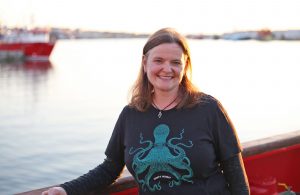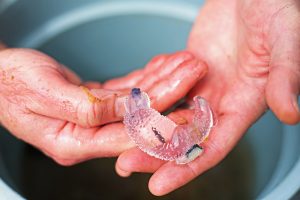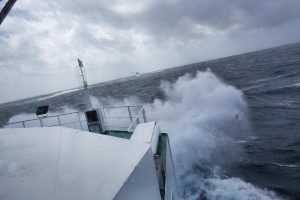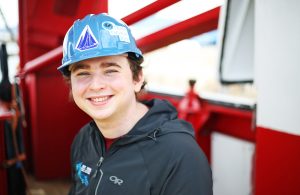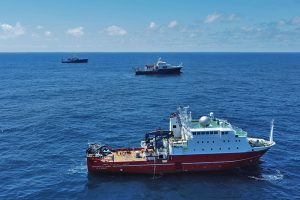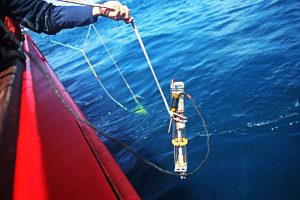Studying the OTZ with NASA
MISSION OVERVIEW
Quick Facts
From May 3-21, 2021, members of the OTZ team sailed aboard the Spanish research vessel R/V Sarmiento de Gamboa as part of the NASA-funded EXPORTS (EXport Processes in the Ocean from Remote Sensing) mission. On this voyage, the team rendezvoused in the northeastern Atlantic Ocean with two other research vessels to study the ocean twilight zone. The voyage let the team field-test new scientific technology. including MINIONS, TZEx, and new acoustic packages, and to gathered previously unobtainable data from the twilight zone.
The three-ship expedition—a highly unusual arrangement for oceanographic research—involved careful collaboration between the Sarmiento and the British ships RRS Discovery and RRS James Cook. Each ship deployed its unique suite of instruments and tow nets within close quarters of the others, letting the international team of scientists study how carbon from the ocean's surface moves through the twilight zone on its way to the deep ocean.
This work will help to answer some tantalizing questions about the zone itself. Biological processes in the twilight zone are responsible for sequestering 2 to 6 billion metric tons of carbon annually—roughly six times the amount of carbon emitted by all the cars on Earth each year—but exactly how the zone extracts that carbon remains unclear. Studying those processes will help scientists improve climate models, create more accurate estimates of sea level rise, and inform new policies for coastal communities worldwide.
| Dates | May 3 - 21, 2019 |
| Location | Eastern Atlantic |
| Ship | R/V Sarmiento de Gamboa |
| Chief Scientists | Ken Buesseler and Heidi Sosik |
| Science Questions | How does carbon from the upper ocean move through the twilight zone? How do animals living in the twilight zone affect the global carbon cycle? |
| Technology | MOCNESS nets MINIONs Twilight Zone Explorer (TZEx) Acoustic packages |
| Partners | NASA EXPORTS |
UPDATES FROM THE FIELD
Day 7: Turning science into stories
Standing on the aft deck of the Sarmiento de Gamboa, Michelle Cusolito chats with Laetitia Drago about how they packed…
Read MoreDay 8: Weird and wonderful creatures of the MOCNESS
Members of the science team and the ship’s crew huddle around buckets and trays in the wet lab. They’ve gathered…
Read MoreDay 9: Hitting the wall
With bad weather approaching, we are suspending science operations and hunkering down.
Read MoreDay 10: Meet researcher John San Soucie
John San Soucie is a PhD student in the Massachusetts Institute of Technology (MIT)—Woods Hole Oceanographic Institution (WHOI) Joint Program…
Read MoreDay 11: Three ships are better than one
Imagine you’re planning an oceanographic expedition. You need to pinpoint the right place in the ocean at the ideal time…
Read MoreDay 12: Small but mighty MINIONs
On a bright, breezy morning, six of us stand on the aft deck holding Pyrex tubes full of 3D-printed materials,…
Read More- « Previous
- 1
- 2
- 3
- Next »







